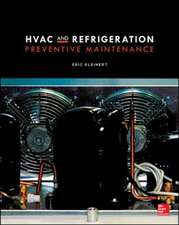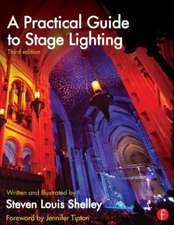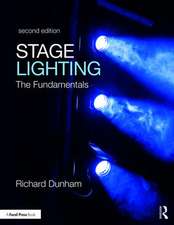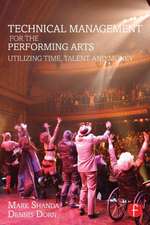The Design of Lighting
Autor Peter Tregenzaen Limba Engleză Paperback – 26 sep 2013
The new edition offers a clear structure, carefully selected material and linking of lighting with other subjects, in order to provide the reader with a comprehensive and specifically architectural approach to lighting. Features of this new edition include:
- technical knowledge of lighting in the context of architectural design;
- an emphasis on imagination in architectural light and presentation of the tools necessary in practice for creative design;
- additional chapters on the behaviour of light and on the context of design;
- a strong emphasis on sustainable design and energy saving, with data and examples;
- analyses of actual lighting schemes and references to current standards and design guides;
- an up-to-date review of lamp and lighting technology, with recommendations on the choice of equipment;
- a revision of the calculation section, with examples and step-by-step instructions, based on recent student feedback about the book.
| Toate formatele și edițiile | Preț | Express |
|---|---|---|
| Paperback (1) | 442.79 lei 3-5 săpt. | +34.53 lei 7-13 zile |
| Taylor & Francis – 26 sep 2013 | 442.79 lei 3-5 săpt. | +34.53 lei 7-13 zile |
| Hardback (1) | 1014.74 lei 6-8 săpt. | |
| Taylor & Francis – 28 iun 2018 | 1014.74 lei 6-8 săpt. |
Preț: 442.79 lei
Preț vechi: 481.29 lei
-8% Nou
84.73€ • 88.46$ • 70.12£
Carte disponibilă
Livrare economică 14-28 martie
Livrare express 28 februarie-06 martie pentru 44.52 lei
Specificații
ISBN-10: 0415522463
Pagini: 224
Ilustrații: 9 black & white tables, 91 colour illustrations, 78 colour line drawings
Dimensiuni: 219 x 276 x 20 mm
Greutate: 0.84 kg
Ediția:Revizuită
Editura: Taylor & Francis
Colecția Routledge
Locul publicării:Oxford, United Kingdom
Public țintă
Professional Practice & DevelopmentCuprins
Part 1: Foundations 1. Observing Light 1.1 The Flow of Light 1.2 The Nature of Surfaces 1.3 Objects in Three Dimensions 1.4 Rooms 2. Describing Light 2.1 Lighting Vocabulary 2.2 Units 2.3 Light and Materials 2.4 Light as Radiation 3. Describing Colour 3.1 The Dimensions of Colour 3.2 Colour Systems 3.3 Coloured Lights and Chromaticit 3.4 Light Source Colour 4. Light and Vision 4.1 The Human Need for Light 4.2 The Structure of the Eye 4.3 Some Factors Affecting Colour 4.4 Differences between People 5. Lamps and Luminaires 5.1 Choosing Lamps 5.2 Luminaires 6. Sun and Sky 6.1 The Daylight Climate 6.2 The Sun 6.3 Illuminance from Sunlight and Skylight 6.4 Daylight in a Room 7. Models and Calculations 7.1 Models and Computers 7.2 Total Flux Methods 7.3 Analytical formulae 7.4 Numerical methods 7.5 Interpreting results 8. Measuring Light 8.1 Photometers 8.2 Practical Measurements 8.3 Luminaire Photometry 8.4 Below Photopic Vision Part 2: Design 9. Ambience and Place 9.1 Perception and Memory 9.2 Windows 9.3 Room Surfaces 9.4 Brightness, Lightness and Colour 9.5 Two Important Decisions 9.6 The Importance of Change 10. Lighting to Increase Visibility: Tasks and Display 10.1 Aims 10.2 Factors Affecting Visual Performance 10.3 Display Lighting: More about Task to Background Contrast 10.4 The Importance of the Geometry 10.5 The Importance of Transitions 11. Design in Practice 11.1 Other Requirements of Lighting 11.2 Lighting Design within a Building Project Part 3: Applications 12. Desk-based Workplaces 12.1 A School Classroom Worked Example 1: Average Daylight Factor Worked Example 2: Sunlight Penetration Worked Example 3: Lumen Method Worked Example 4: Energy Use 12.2 Offices Professional Design Example I:SHI International Corp World Headquarters, New Jersey, USA 13. Buildings for Display 13.1 Retail Spaces 13.2 Art Galleries and Museums Worked Example 5: Illuminating a Picture, Point Source Calculation Professional Design Example II: The New Acropolis Museum, Athens 14 Residential Care Buildings Professional Design Example III: Colliers Gardens Extra Care Housing, Fishponds, North Bristol, UK Worked Example 6: Sunpaths and Vertical Sky Componentn 15. Hotels: Public Rooms Professional Design Example IV: Mandarin Oriental Hotels, Geneva and Prague 16. Exterior Lighting: Buildings and Pathways 16.1 Floodlighting a Building Worked Example 7: Presentation of Floodlighting Designs 16.2 Pedestrian Routes and Surrounding Areas Professional Design Example V: Devonshire Square, London, UK 16.3 Conclusions 17. References and Further Reading 18. Data
Notă biografică
The authors are known internationally for teaching and research in lighting. David Loe founded the postgraduate course in Light and Lighting at University College London and directed the course for many years. His research focused on the relationship between the lit environment and human performance. Peter Tregenza was Professor of Architectural Science at the University of Sheffield where his teaching was to architecture students and his research was on daylighting. Both authors have lectured extensively throughout the world and received prestigious awards for their research.
Recenzii
Descriere
This fully updated edition of the successful book The Design of Lighting, provides the lighting knowledge needed by the architect in practice, the interior designer and students of both disciplines.
The new edition offers a clear structure, carefully selected material and linking of lighting with other subjects, in order to provide the reader with a comprehensive and specifically architectural approach to lighting. Features of this new edition include:
- technical knowledge of lighting in the context of architectural design;
- an emphasis on imagination in architectural light and presentation of the tools necessary in practice for creative design;
- additional chapters on the behaviour of light and on the context of design;
- a strong emphasis on sustainable design and energy saving, with data and examples;
- analyses of actual lighting schemes and references to current standards and design guides;
- an up-to-date review of lamp and lighting technology, with recommendations on the choice of equipment;
- a revision of the calculation section, with examples and step-by-step instructions, based on recent student feedback about the book.





















